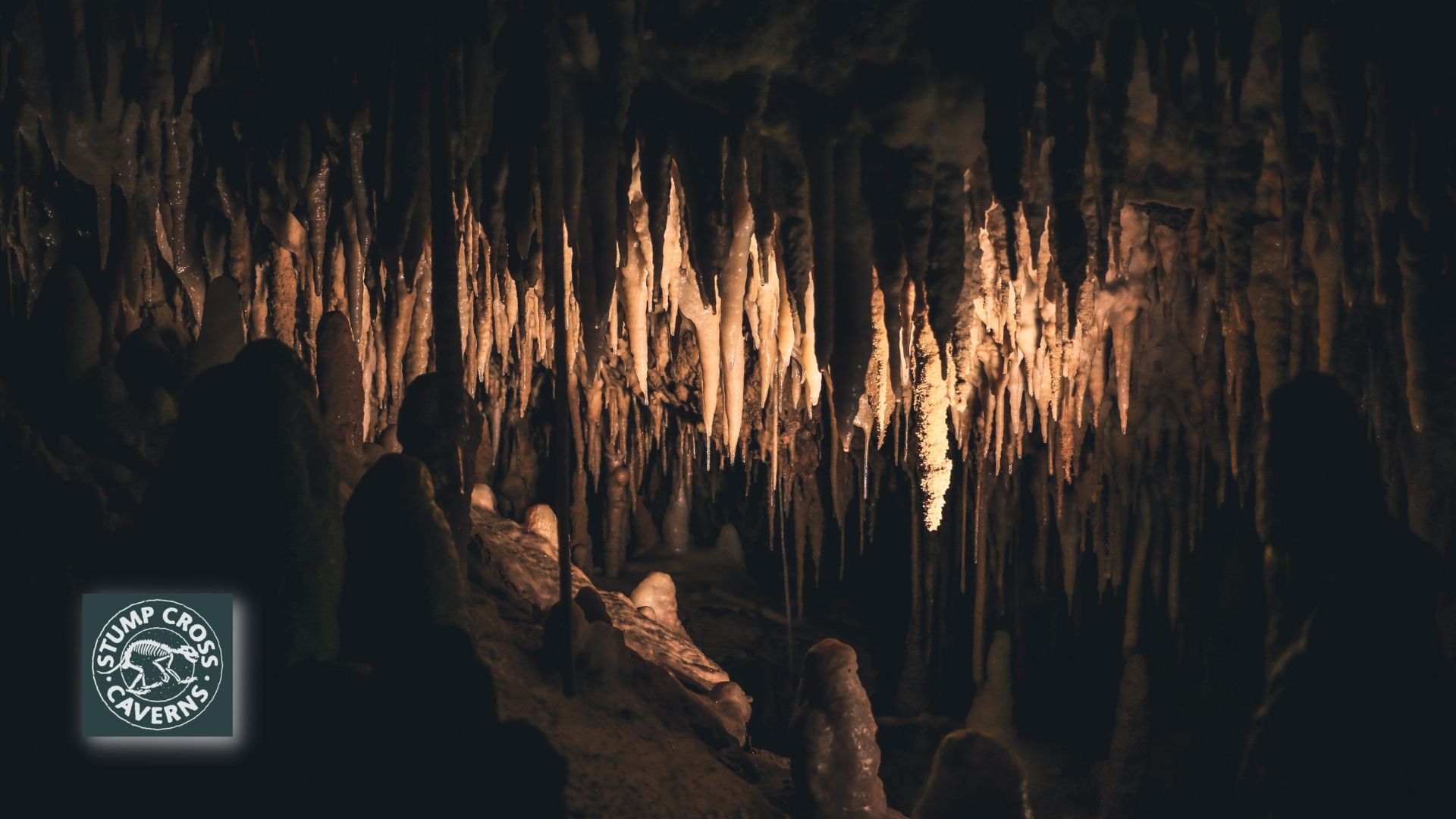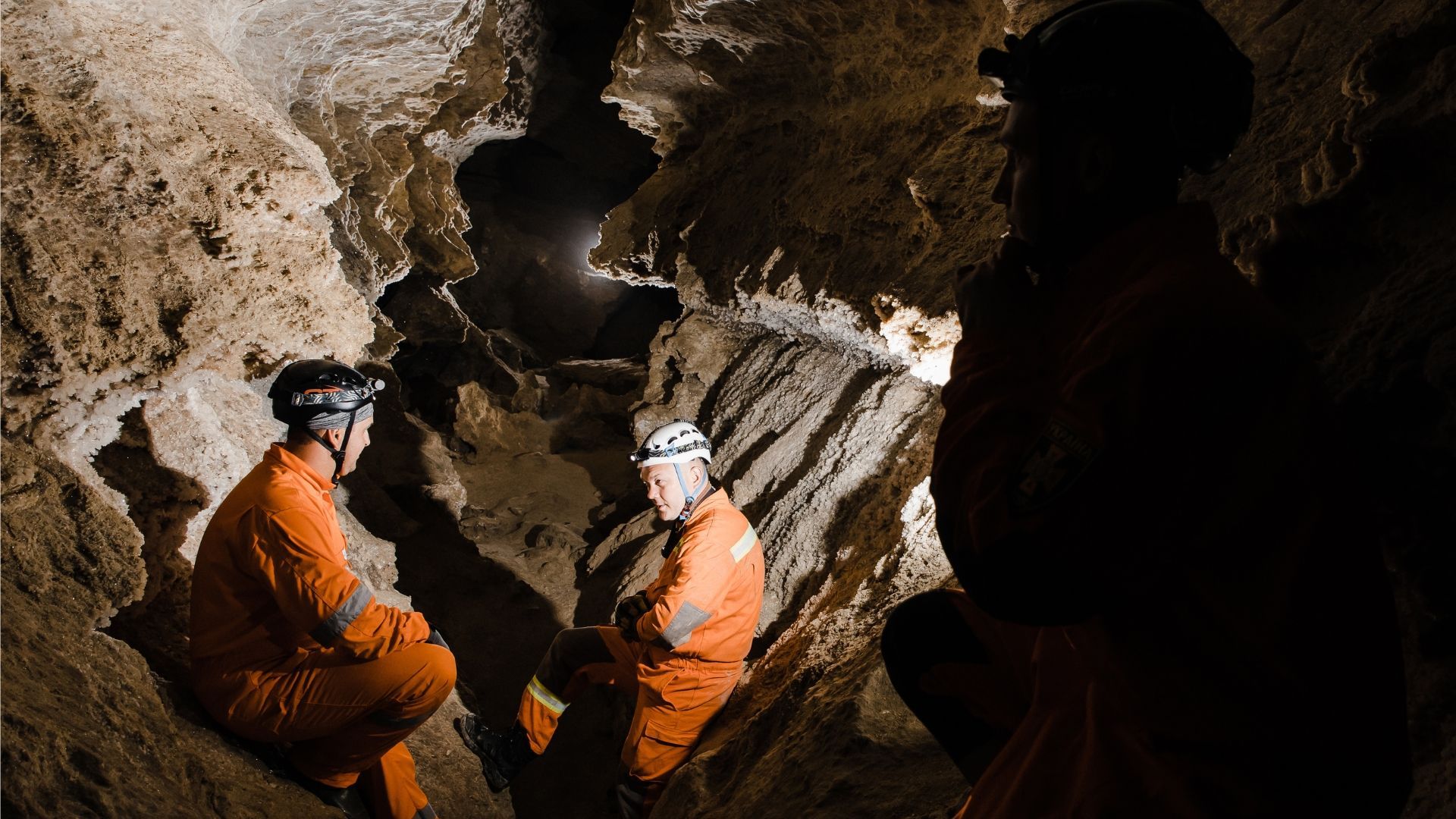We've got more than our fair share of stalactites and stalagmites at Stump Cross Caverns. But why do they look like that? Find out in our fact pack.

At Stump Cross Caverns, we're mad about speleothems.
If you're reading that sentence and murmuring "Excuse me?", don't worry. "Speleothem" is the umbrella term for naturally occurring rock formations.
There are lots of different kinds – but the most famous are stalactites and stalagmites. Even if you've not visited a cave, you probably learned at school about these icicle-shaped rocks.
These formations are beautiful to look at – but they're also a glorious mouthful. Running through a list of speleothems – boxwork, dogtooth spar, pendulite, stegamite, moonmilk – puts you in mind of Auden's poem about lakes: "Just reeling off their names is ever so comfy."
Want to know more about cave formations? You've come to the right place. And if you want to see them up close, why not pay us a visit?
First of all, let's put to bed the age-old question. Stalagmites and stalactites: which one's which?
What's the difference between a stalactite and a stalagmite?
There are a few mnemonics for learning the difference.
The first one is a little blue. It probably comes from
Carry On Caving.
"Mites go up – tites come down." It's certainly memorable – but perhaps not ideal if you're trying to introduce a youngster to the magical world of caves.
The wordier among you might remember that the "g" in stalagmite stands for "ground" and the "c" in "stalactite" stands for "ceiling".
But for our money, the best way to remember is with this rhyme: "Stalagmites might reach the roof. Stalactites have to hold on tight."
When they meet in the middle, they're known as "columns".
Why are they that shape?
It all starts with rain. It falls on the ground and becomes groundwater. There, it extracts extra carbon dioxide from soil organisms.
In areas where there are limestone caves, like Stump Cross, this carbon-rich water starts dripping through the roof, absorbing calcium carbonate as it goes.
As it travels, the water dissolves part of the calcium carbonate, becoming bicarbonate or "calcite" (a word you come across a lot when reading up on caves and cave formations).
This calcite-rich water seeps into the cave. On contact with air, it releases its surplus CO2 and deposits its calcite on the cave walls.
What starts as a tiny ring of calcite builds up over time until a stalactite is formed.
Stalagmites are the mirror image of 'tites. Groundwater drips onto the floor of the cave. Rather than growing downwards, they grow upwards and outwards. They're usually a bit fatter than their ceiling-bound brethren.
How long do they take to form?
Speleothems are
slow.
It takes about a thousand years for them to grow less than 10 centimetres. That means tens of thousands of years to form a column.
Caves are notoriously hard to date. Identifying the age of speleothems is one way to start – at the very least, you know that the cave is older than them.
Stalactites and stalagmites don't only grow in caves, however – and in other environments, they grow more quickly. Under concrete bridges, for instance, they grow about a centimetre a year.
Rare and unusual formations from around the world
Helictites are like water bubbles – they can break at the slightest touch. They're famous for their curving, angular form. To get a sense of their shape, your best bet is to look on Google Images, but they've been variously described as "curly fries", "butterflies" and "clumps of worms".
Helictites are found across the world – from Utah to Australia, from Spain to California.
Ever wanted to visit Superman's Fortress of Solitude? The closest you'll get is probably the Cave of the Crystals, 300 metres beneath the Sierra de Naica Mountain in Chihuahua, Mexico.
In 2000, miners discovered a cave filled with towering, milk-white crystals – massive beams that are big enough to walk across.
But with temperatures of up to 47°C and humidity at almost 100%, it's not great for sightseeing.
World-famous formations
According to
Guinness World Records, the award for "longest free-hanging stalactite" goes to a specimen in Gruta do Janelão, Brazil.
It's a staggering 28 metres long – that's the height of five adult giraffes.
A rare and notable formation is the "cave pearl". These are round, white calcite balls. They're usually found in groups of a dozen or more in a kind of nest.
For our money, the most spectacular cave pearls are in Son Doong Cave in Vietnam. Some of them are the size of baseballs!
Then there's the Cave of the Marbles in Tabasco, Mexico, where one passageway boasts 200 million pearls.
In Carlsbad Caverns National Park, USA, there's a show-stopping array of formations. These include the Devil's Spring and Iceberg Rock. Its Lechuguilla Cave brings in tourists from around the world.
What can you see at Stump Cross?
Here at Stump Cross, we have truckloads of formations.
We've written elsewhere about
how the caverns were discovered. The bitesize version is that miners were looking for lead and stumbled across them. In their eyes, formations were junk – they would clear them out and sell them as cheap and cheerful ornaments.
Today, we take the preservation of our formations very seriously. There are stalagmites and stalactites galore, as well as calcite columns and big rock pillars that stretch from floor to ceiling.
They range in size from miniature "straw" stalactites to the huge slabs we call The Butcher's Shop.
Take Wolverine Cave – a chamber teeming with stalactites and limestone pillars like a fairy grotto.
There are different textures, too – from pocked and pitted rimstone pools to a curtain-like sheet of rock. From The Hawk, a bird-like stub of rock, to The Organ, an impressive expanse of flowstone that resembles church organ pipes.
But don't take our word for it – come along and see for yourself!
Stump Cross Caverns is a series of ancient underground
caves near Pateley Bridge in the Yorkshire Dales. Come see our incredible rock formations for yourself. It's quick and easy to
book tickets online.















